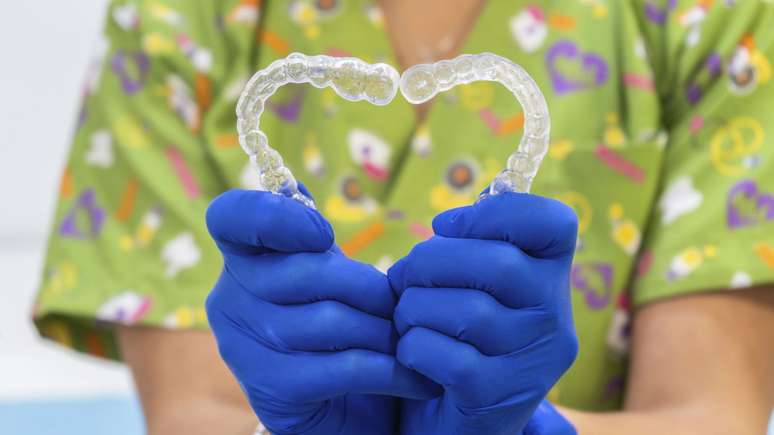Freezing eggs before the age of 35 and opting for egg reception can be alternatives to ensure a successful pregnancy
On Monday (09/19), actress Claudia Raia announced on Instagram that, at the age of 55, she is expecting her third child, the first with her husband, Jarbas Homem de Mello. “When the doctor asked me for a beta test, the pregnancy blood test, I said, ‘Honey, you’re really crazy. Where did you get this from? I’m 55.’ Then he said, ‘But I have to investigate because all your rates are different, they are weird ‘”, said the artist on the social network.

The quality of the eggs over the years
One of the factors with the greatest impact on the chances of pregnancy spontaneous is the woman’s age. This is because they are already born with a predetermined quantity of eggs, which also age over the years. Consequently there is a decrease in the quality of the eggs, which begin to show more chromosomal alterations and less energy to generate a healthy embryo.
In vitro fertilization and late pregnancy
This fact made some surprised by the actress’s announcement. However, assisted reproductive and fertility preservation techniques can increase the chances of the procedure being successful.
“In vitro fertilization (IVF) is one of the treatments for Human reproduction most popular. However, their success rates are also influenced by the aging process, since the age of the egg used determines the possibility of pregnancy “, explains Dr. Rodrigo Rosa, specialist in human reproduction and clinical director of the Mater Prime clinic, in San Paul.
According to the obstetrician gynecologist, the probability of IVF pregnancy with one’s own egg at the age of 44 is 5% and at the age of 45 it is less than 1%. “Of course, there are exceptions to the rule, such as women with an above average ovarian reserve or who have previously frozen their eggs. But when this is not the case, the solution is the treatment known as ovoreception,” the specialist points out.
What is ovulation?
According to the doctor, the ooreception consists in the use of donated eggs for In Vitro Fertilization, which will be fertilized in the laboratory with the partner’s sperm or even by a donor to then be inserted into the uterus of the woman who will give birth to the baby.
“Through this method, the chances of pregnancy through In Vitro Fertilization increase by about 60% per attempt even in already elderly women, over the age of 40,” explains Dr. Rodrigo Rosa.
As the obstetrician gynecologist explains, the gestation donating eggs or sperm does not reduce the role of the recipient couple’s parents. “And it is essential that topics like these are increasingly discussed to raise awareness of the importance of gamete donation and to naturalize the reception of eggs and sperm in fertility treatments,” she adds.

How is the ooreception procedure performed?
Once you have opted for ovoriception, in vitro fertilization takes place like any other, with donated eggs being fertilized in the laboratory with sperm. “In the period before egg fertilization, the embryos live on a plate, in an oven heated to body temperature. The team monitors their growth and development and finally chooses the right one to transfer back to. uterus“, explains Dr. Rodrigo Rosa. The specialist states that the embryo is transferred” back to the uterus in a process similar to the Pap test. If you have many healthy embryos at this stage, they can be frozen for later use. “
Beginning of pregnancy after fertilization
About a week and a half to two weeks after the embryo transfer, a test is done to see if it adheres to uterus. “A simple blood test, or even a home pregnancy test, will detect human chorionic gonadotropin (HCG) levels, a sign that you are finally pregnant,” says the doctor.
With a positive test the final waiting period begins: at 38 weeks until delivery. From here, the pregnancy proceeds normally like the others. But, of course, a small number of pregnancies are interrupted by miscarriages, so it is essential to adopt good obstetric care to avoid complications.
“Here, life habits say a lot. Vitamin D levels also need to be monitored, as the very action of vitamin D in the immune system can also impact conception. Low levels can lead to rejection of the implant. embryo from the pregnant woman, both in In Vitro Fertilization and in spontaneous pregnancy. If in doubt, do not be afraid or ashamed to ask your doctor all the questions you want and ask for clarity when you do not understand something, after all, pregnancy is a big dream “, concludes the doctor Dr. Rodrigo Rosa.
By Maria Claudia Amoroso and EdiCase Writing
+The best content in your email for free. Choose your favorite Earth Newsletter. Click here!
Source: Terra
Benjamin Smith is a fashion journalist and author at Gossipify, known for his coverage of the latest fashion trends and industry insights. He writes about clothing, shoes, accessories, and runway shows, providing in-depth analysis and unique perspectives. He’s respected for his ability to spot emerging designers and trends, and for providing practical fashion advice to readers.








